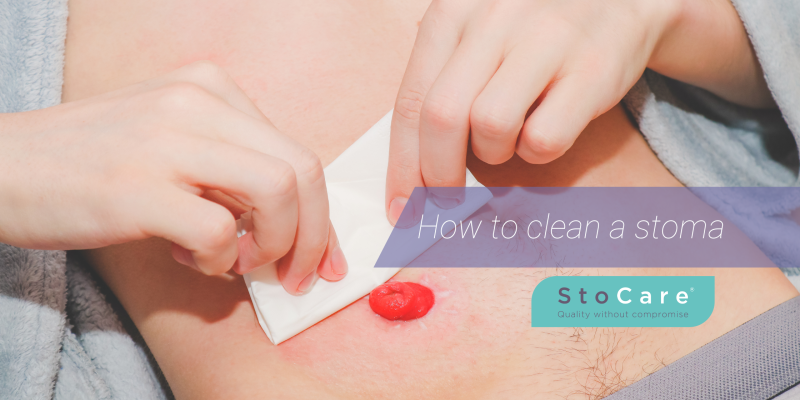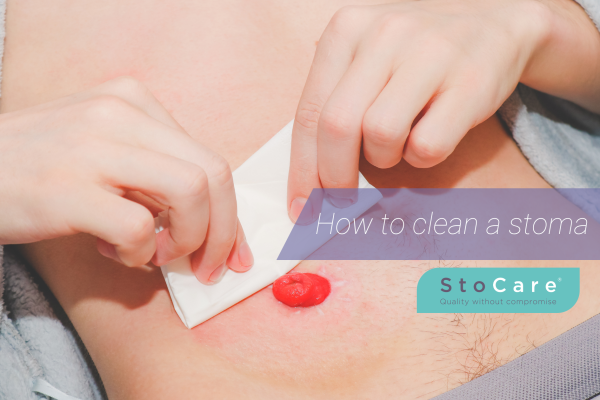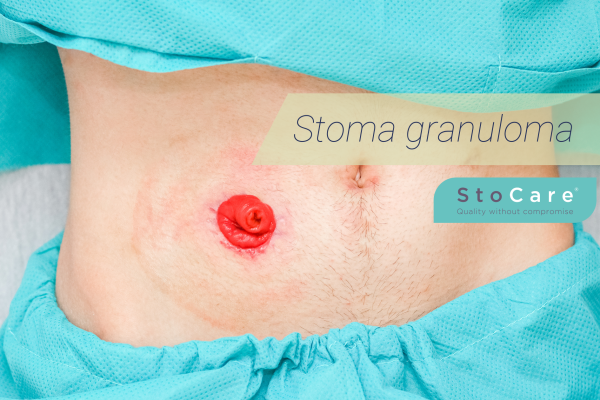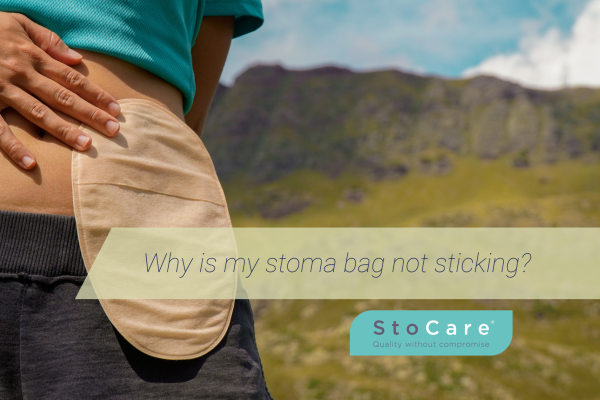It’s normal for ostomates to be unclear on how to clean their stoma, or to worry they’re not doing enough. This guide will help you understand when and how to clean a stoma effectively, whether you’re managing your own care or supporting someone else with theirs. This advice can be applied to any type of stoma, including colostomy, ileostomy and urostomy.
How often should a stoma be cleaned?
Stoma bags are designed for hygiene by containing output and protecting your skin, so you don’t need to worry about excessively washing your stoma. In fact, over-cleaning can cause more harm than good by disrupting the natural pH balance of your peristomal skin. If you are worried about smells, reading our guide to stoma odour should help to reassure you.
You should clean off any stoma output whenever you change your appliance or if you experience a leak. Stoma output contains enzymes that can quickly irritate and damage skin, so you should wash it off as soon as possible if any seeps under your baseplate.

If you use closed bags, you should change them when they reach approximately one-third full. This prevents the weight of the contents from compromising the seal.
If you have a drainable bag or use a two-piece system, you may want to aim to change the baseplate around every three days. This frequency allows regular skin checks and cleaning whilst minimising trauma from repeated adhesive removal (also known as MARSI). However, change immediately if you experience leakage, itching or irritation.
Of course, everyone’s output levels are different, so this will change from person to person. You will find a changing and cleaning routine that fits in with your lifestyle and keeps your skin healthy.
Cleaning a stoma guide
Stoma cleaning products
So what stoma cleaning products do you need? The simple answer is – not a lot. Here’s a checklist:
- Dry wipes, cotton wool, gauze or something else soft to wipe with.
- Water (or very gentle, minimal product wet wipes if no water is available).
- If your stoma is very active, something to catch output, such as a disposable bag positioned beneath your stoma.
- Any stoma products needed for your appliance change.
Most delivery companies are able to send free dry wipes and disposable bags with your regular order to help you with your stoma hygiene.
Products not to use when cleaning a stoma
Your peristomal skin is delicate and needs to be taken care of gently, so you should try to keep your stoma washing routine as simple as possible. You should avoid:
- Baby wipes or wipes containing alcohol
- Heavily fragranced soap
- Lotion or moisturisers
- Baby powder
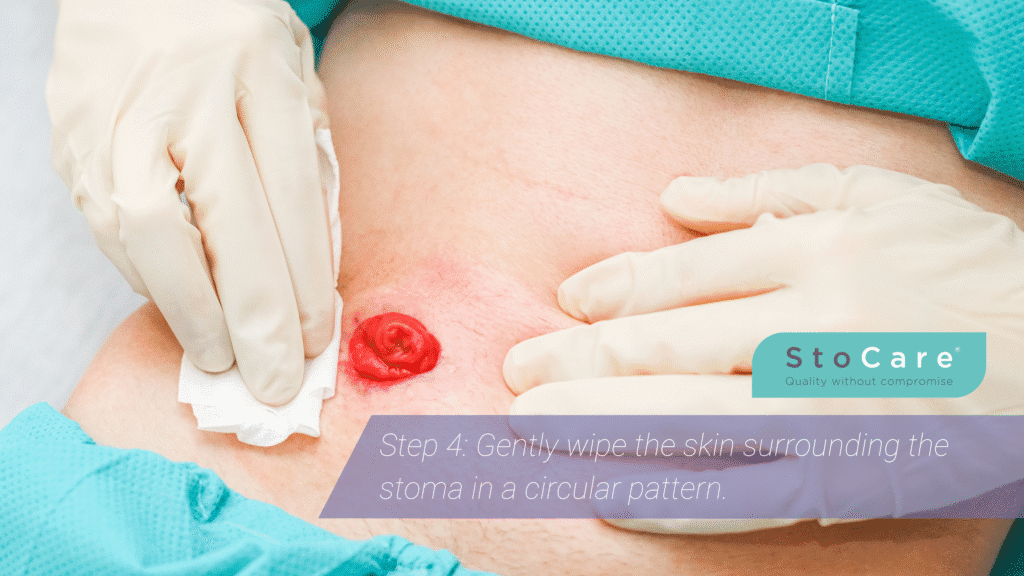
How to clean a stoma
- Remove the stoma appliance gently using medical adhesive remover (see video instructions).
- Clean off any adhesive residue left behind with a medical adhesive remover wipe, such as StoCare Remove wipes.
- Moisten some tissue, cotton wool or a gauze with warm water, or use a wet wipe with minimal ingredients.
- Gently wipe the skin surrounding the stoma in a circular pattern.
- If there is any output on the stoma itself, gently wipe it off.
- Use additional water as needed to remove any dried-on output. Try not to scrub or rub harshly.
- You may wish to check the area in a mirror to ensure all the output has been removed.
- Observe your skin for any signs of irritation and your stoma for anything out of the ordinary.
- Ensure the area is completely dry before applying your next pouch – you can dab it with kitchen roll, use a hair dryer on the lowest heat setting or just let it air dry.
- Consider applying a barrier film like StoCare Protect before your new appliance. This creates a protective layer between your skin and any output that might seep under the baseplate.
- Don’t apply any moisturisers, creams, powders or lotions unless your stoma nurse has specifically recommended them. These products can interfere with adhesion and consequently cause leakage and skin damage.
Your stoma contains no nerve endings, so don’t worry about touching it. Cleaning the area won’t cause pain or damage it. You may notice slight bleeding during cleaning – this is normal. The blood vessels sit very close to the stoma’s surface and can bleed with minimal contact. This should stop quickly on its own.
Showering and bathing with a stoma
What considerations should you make about your stoma when showering or bathing? Can you have a shower with your stoma bag off? There are no hard and fast rules; you can choose what works best for you. Here are some quick tips:
Removing your stoma bag to wash
Showering or bathing without your stoma bag on is perfectly safe. Water and soap won’t harm your stoma or enter the opening, and many people find washing without their appliance helps them to feel fully refreshed. Be sure to rinse soap off thoroughly and try to avoid products containing lotions, oils, glitter, moisturisers or heavy fragrances, as residue can prevent your bag from adhering properly.
Your stoma may be active during washing, so mentally prepare for this possibility. Timing your wash for when output is less likely – such as first thing in the morning before eating – can make the experience easier.

Keeping your stoma bag on to wash
If you’re not ready for a bag change, or don’t want to risk your stoma being active whilst washing, it’s absolutely fine to keep your appliance on in the shower or bath. Most modern stoma bags are designed to be waterproof (meaning you can wear them whilst swimming, too). Pat it dry afterwards or use a hairdryer on a cool setting.
Check the seal remains intact after washing. Again, try to avoid using oily products around the stoma as it can cause the adhesion to break down.
Monitoring your peristomal skin
Each bag change is an opportunity to check for problems. Look for redness, irritation, changes in your stoma’s size, shape or colour, or small red bumps that could indicate granulomas. Report any concerns to your stoma nurse. Regular monitoring helps you catch issues early when they’re easiest to treat.
For more detailed information about maintaining healthy skin, read our guide to peristomal skin protection.
Conclusion
Stoma hygiene is not about complicated routines or multiple products. If you’re uncertain about your stoma cleaning routine or experiencing skin problems, your stoma nurse can provide personalised advice.
Although all our articles are written alongside qualified medical professionals, this information is for guidance and does not replace advice given by your healthcare team.

